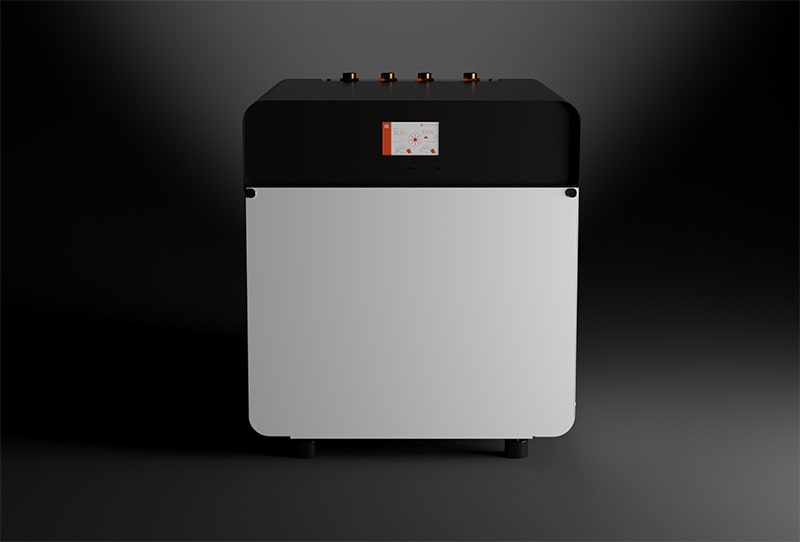
With 6.5 million homes estimated to be in fuel poverty, the housing sector requires substantial and immediate overhauls to improve standards, reduce consumer running costs, and reach net zero.
By 2050, about 30 million UK homes will need to decarbonise their heating. Many of these are terraced houses, tenements, high-rise flats, and tower blocks – properties often called ‘complex to decarbonise’ that have traditionally been excluded from using low-carbon heating.
Heat pumps are widely recognised as a critical solution to help homes reduce their carbon footprint; the Government revealed that Boiler Upgrade Scheme applications are rising year-on-year.
Whilst air source heat pumps are currently the more commonly fitted heat pump type in the UK, the much higher efficiency of ground source heat pumps makes them cheaper for consumers to run. Ground temperatures remain constant all year round at around 10oC, whereas air temperatures decrease overnight and in the winter. For every 1 kilowatt (kW) of electricity a ground source heat pump uses, it can deliver 3 to 4 kW of heat, making the technology highly efficient.
In 2025, when the Future Homes Standard is set to ban gas boilers in newly built homes, UK heat pump installations will increase rapidly. However, more is needed to accelerate home heat decarbonisation to deliver the Government’s target of 600,000 heat pumps annually by 2028.
Kensa recognises that the transition to renewable heating must be affordable and effective for consumers, installers and the UK’s energy system. People will be more willing to switch to solutions that are accessible and familiar. Therefore, Kensa is emulating the business model deployed by gas networks: area by area, street by street, installing pipes into the street that connect to a white heating box in people’s homes.

Shoebox NX
This white heating box is the newly launched Shoebox NX – a ground source heat pump that is five times more efficient than a gas boiler, is 20% cheaper to run than air source models over its lifetime when using Kensa’s funded utility model, and is compact enough to fit in a similar space as a combi boiler.
Kensa’s Shoebox NX delivers the efficiency of a large, expensive heat pump in the footprint of one that’s compact, affordable and cupboard-friendly. Designed to be compatible with almost any UK home, it will appeal to consumers who are low on space and want a discreet, low-noise solution.
As well as being environmentally friendly, it has an A+++ efficiency, low electricity usage and low maintenance, delivering long-term cost savings for consumers. The NX was designed using over 25 years of expertise and can be easily fitted by most heating and plumbing engineers without extensive training.
The NX has been designed with mass heat pump rollout and ease of installation in mind because it is intended to be a compelling, cost-effective and hassle-free solution for thousands of UK homes. The mechanism for achieving this is installing the NX as part of area-by-area heating networks; Networked Heat Pumps.
With Networked Heat Pumps, we can decarbonise homes at scale, tower block by tower block, street by street, community by community, bringing new areas to the network over time, similar to how fibre broadband networks were rolled out.
Like with gas, Networked Heat Pumps rely on an underground network of pipes, in this case circulating a water/antifreeze mix. The pipes absorb heat via vertically drilled boreholes, which is transferred into individual heat pumps within each home. Each household’s ground source heat pump is independently controlled, giving people freedom over how and when they heat their home, putting them in charge of their comfort, their bills and their electricity provider. The underground infrastructure is almost invisible and has a miniscule above-ground footprint, making it suitable for the millions of UK properties that lack adequate space for an air source unit. Again, just like with gas, private utility companies would fund and own the underground network of boreholes and pipes. This lowers the upfront installation costs, with consumers paying a standing charge as part of their energy bill to connect to the heat network. The actual heat pump is an equivalent cost and more efficient than their existing boiler – it will also save a lot of carbon and help with climate change.
Studies have shown that upfront costs are 8% less when ground source heat pumps are installed at scale as part of a funded heat network. For instance, when a typical 3-bed Victorian terraced house connects to a funded network with a ground source heat pump, it can cost the homeowner £900 (8%) less to install than an air-source heat pump, due to its smaller size and the lack of external installation work required. Due to their higher efficiency, lower maintenance and longer life expectancy, the annual costs of running a networked ground source heat pump are up to 20% lower than an air-source heat pump.
Once the infrastructure is deployed, households can connect at a time that suits them, for the lowest cost, lowest carbon and least hassle – whether that’s an entire newbuild development connecting on completion or an existing property switching from their gas boiler by utilising government funding and their tradesperson of choice.
The model is already providing clean heating for new build homes and complex-to-decarbonise private and social retrofit properties. Kensa recently connected 133 new build homes in Bristol, 96 existing properties in a Cornish village and 273 high-rise flats in Essex via Networked Heat Pump systems. These, amongst countless other Kensa projects, have further proven that Networked Heat Pumps can rapidly and affordably decarbonise multiple properties.
Kensa believes that the NX and Networked Heat Pumps will make a mass heat pump rollout more viable and straightforward, with the perfect pairing of product, infrastructure and funding – offering a viable, replicable solution across all social housing archetypes, providing energy security, resilience against rising fuel prices and preventing future fuel poverty.
The Kensa Shoebox NX supports Britain’s 2050 net zero targets and offers a viable, widespread alternative to the gas grid. Factory production of the NX can be readily scaled up to deliver 30,000 per year.
About the author
Tamsin Lishman is an Oxford graduate of Engineering Science and a Fellow of the Energy Institute and has held senior positions at EnergyNest, Northumbrian Water Group, Centrica, and BP. Tamsin was appointed as Kensa Group CEO in 2023.






